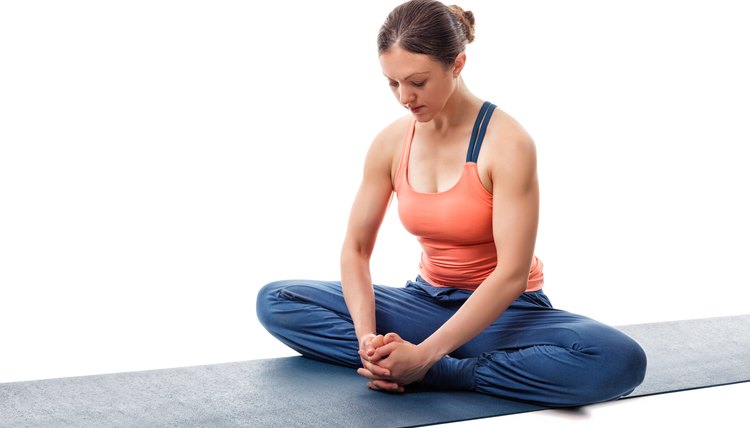What does fact checked mean?
At SportsRec, we strive to deliver objective content that is accurate and up-to-date. Our team periodically reviews articles in order to ensure content quality. The sources cited below consist of evidence from peer-reviewed journals, prominent medical organizations, academic associations, and government data.
The information contained on this site is for informational purposes only, and should not be used as a substitute for the advice of a professional health care provider. Please check with the appropriate physician regarding health questions and concerns. Although we strive to deliver accurate and up-to-date information, no guarantee to that effect is made.
Chest Muscle Pain From Doing Ashtanga Yoga

Pattabhi Jois developed the extremely demanding style of yoga, commonly known as Ashtanga. Practitioners can expect a vigorous workout that starts with a series of Sun Salutations followed by 11 fundamental poses; and then the primary series, which consists of 50 poses strung together in a flowing manner and connected by your inhalations and exhalations. Ashtanga yoga requires great mobility in your chest and back, so if you experience chest-muscle pain, gear back and develop those muscles before resuming your Ashtanga practice.
Pectoralis Major
The pectoralis major is the largest chest muscle. It originates just below the collarbone, covers the first six ribs and attaches to the sternum, or breastbone. The pectoralis major also attaches to the humerus, or long bone of the upper arm. This muscle is used to flex, or raise and lower, the shoulder. The pectoralis muscles also rotate the shoulder inward and adduct, or bring the shoulder inward, toward the center of the body.
Muscle Strain
Any muscle can become strained or irritated from overuse, and the pectoral muscles are no exception. Physically demanding exercise and muscle tension can also contribute to pain in the muscle. If your chest pain is caused by Ashtanga yoga, it will tend to involve only the chest muscles and will start during or immediately after the activity. The repetitive nature of Ashtanga yoga -- in which poses are repeated over and over in a flowing manner-- may exacerbate pain from an overused or strained chest muscle.
Sun Salutation
An Ashtanga yoga session always begins with sun salutations. Three positions in the sun salutation – the plank, stick and upward dog – all require use of the pectoral muscles. If you have a pectoral muscle strain, these positions may cause pain. Any Ashtanga yoga posture in which you raise or lower the arms while holding them out to the sides or bring the hands together at shoulder height will work the pectoral muscles and may cause pain.
Considerations and Warnings
Chest pain can have a number of causes, some of them potentially serious. Chest pain could mean a heart attack or pulmonary embolus – both need immediate medical attention. Chest pain could also be the result of costochondritis, an inflammation of the cartilage that connects the ribs and breastbone. Don’t assume that chest pain is a pulled muscle, especially if you have any other symptoms such as shortness of breath, sweating or nausea. Ashtanga yoga is extremely vigorous and perhaps best for the young and uninjured so consult a health care professional to determine the cause of chest pain before you resume Ashtanga yoga practice.
References
Writer Bio
Beth Greenwood is an RN and has been a writer since 2010. She specializes in medical and health topics, as well as career articles about health care professions. Greenwood holds an Associate of Science in nursing from Shasta College.
